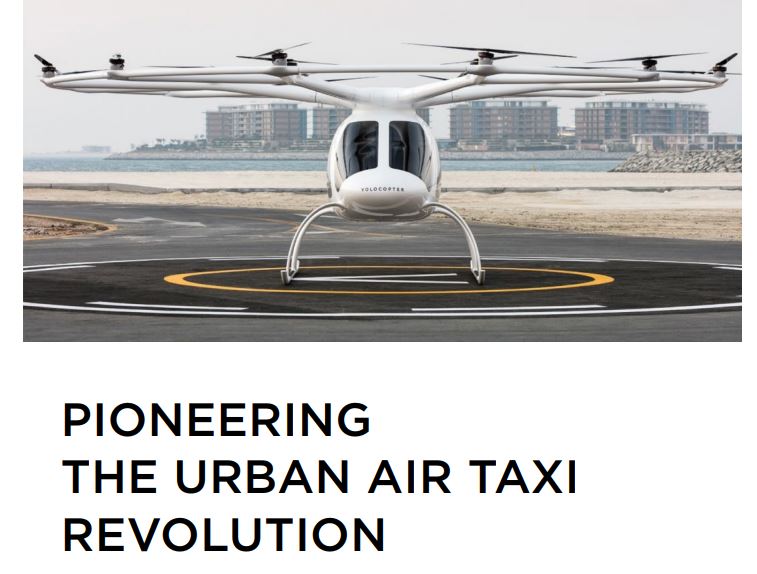
Air taxi developer Volocopter published has published a white paper “Pioneering the Urban Air Taxi Revolution” authored by Jan-Hendrik Boelens, CTO of Volocopter. The paper discusses current challenges associated with developing, certifying and launching air taxis in the megacities of the world and aims to offer solutions to those challenges. Primarily, the paper focuses on the topics safety & certification, noise emissions, range and speed, operating costs, capacity, and usability.
According to the company the key take-aways include:
- There is no single best eVTOL concept, because mission is paramount when designing electrically powered aircraft.
- Air taxis serving the intra-city UAM mission need to cover the most popular high-traffic routes in major cities, offering meaningful time savings and/or allow connections between points that are not well served by current options. The paper shows that a range of 25 to 35 km is viable and a valid starting point to develop the market.
- Noise emissions of aircraft are a decisive factor for urban air taxi acceptance.
- Certification standards for air taxis have been defined by the European Aviation Safety Agency (EASA), and Volocopter supports these high safety standards. Safety and certifiability are strongly connected to simplicity.
- Pricing is a key factor in making air taxis accessible to a large customer base. Keeping operating costs low to build a scalable business will allow for accessible pricing.
According to the company: “Volocopter’s aircraft design focuses on serving the inner-city short-range mission. Boelens makes a case for the simple, safe, and certifiable aircraft design Volocopter has been pursuing since their early days by outlining and explaining some of the technological design decisions Volocopter has taken.”
For more information
https://press.volocopter.com/index.php/volocopter-publishes-white-paper-on-urban-air-mobility

